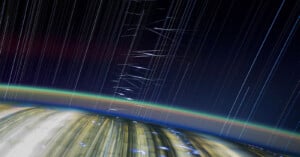
What Starlink Satellites Look Like from the ISS
Astronaut Don Pettit has shared a fascinating view of what Starlink satellites look like from onboard the International Space Station (ISS).

Astronaut Don Pettit has shared a fascinating view of what Starlink satellites look like from onboard the International Space Station (ISS).
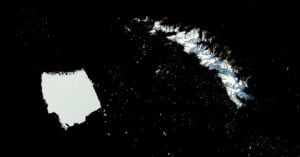
An incredible new satellite image taken by NASA shows the world’s largest iceberg, A23a, rapidly breaking apart as it remains lodged off the coast of South Georgia, a remote island in the South Atlantic Ocean.
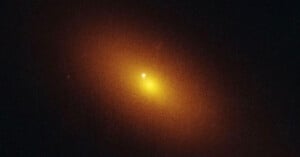
Astronomers have captured a supermassive black hole tearing a star apart -- and doing so far from where the mysterious celestial objects are typically found.

NASA's Mars Perseverance rover, which just captured auroras from the Martian surface for the first time, also recently captured a predawn landscape shot that includes Deimos, the smaller of Mars' two moons.

NASA has announced the winners of its annual Photographer of the Year Awards with Michael Democker taking home the top prize.
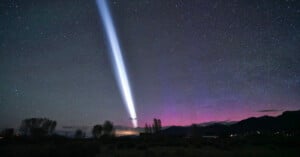
A photographer in Colorado who was out capturing an unexpected aurora lights display got more than he bargained for when his camera picked up a brilliant flash of white light in the sky.
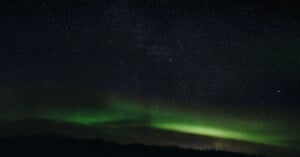
NASA’s Perseverance rover has detected visible auroras on Mars, marking the first time the lights have been witnessed from the surface of another planet.

The May full Moon is known as the Flower Moon, a term that originated from Native American tribes that associated the springtime celestial event with the abundance of blooming flowers.
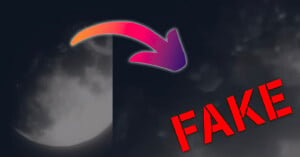
A viral video of an asteroid dramatically hitting the Moon has all the trappings of a fraud.
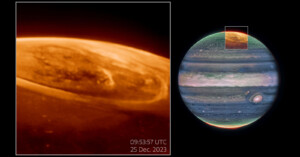
The NASA/ESA/CSA James Webb Space Telescope (JWST) captured brilliant new details of the auroras on Jupiter, the Solar System's largest planet. The auroras observed on Jupiter are a staggering 100 times brighter than the auroral displays observed on Earth.

To commemorate the 100th anniversary of the first public planetarium, which was founded in Munich, Germany, NASA and its partners created a 3D version of the James Webb Space Telescope's (JWST) iconic "Cosmic Cliffs" image.

Astrophotographer Andrew McCarthy, whose fantastic work PetaPixel has featured many times, recently captured an incredible photo of a rocket launch from right near the launchpad. McCarthy's lens was destroyed in the process, but the resulting image looks well worth the steep price.

The Hubble Space Telescope's latest image is one of its most beautiful ever. The eye-catching portrait of the peculiar spiral galaxy Arp 184, also known as NGC 1961, demonstrates the incredible depth and detail that make the 35-year-old Hubble still such an enchanting space telescope.
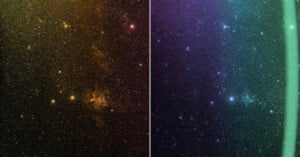
NASA's SPHEREx space observatory launched into space in early March and began its scientific operations yesterday, May 1 following weeks of preparation. It is now ready to survey the entire sky with 3,600 daily photos at a time.
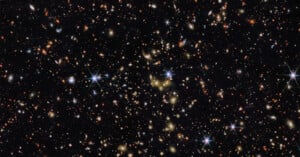
The latest James Webb Space Telescope "Picture of the Month" exemplifies the $10 billion telescope's remarkable imaging capabilities. The photo shows cosmic objects ranging from stars inside the Milky Way to galaxies billions of light-years away.
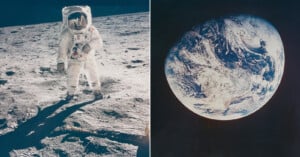
Bonhams Cornette de Saint Cyr's recent space photograph auction has ended, with Neil Armstrong's famous portrait of Buzz Aldrin topping the charts, selling for nearly $32,000.
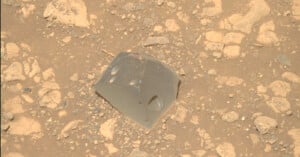
A dark, jagged rock formation on Mars, nicknamed Skull Hill, has caught the attention of NASA scientists. Spotted by the Perseverance rover on April 11 while descending a slope known as Witch Hazel Hill, the rock stands in stark contrast to the surrounding pale terrain of Jezero Crater.
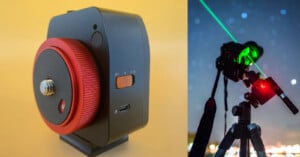
Astrophotography gear company Move Shoot Move's (MSM) Nomad star tracker aims to be an accessible solution for budding night sky photographers looking to take their deep-sky photography to the next level.
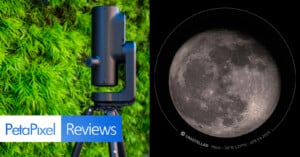
The Odyssey Pro Smart Telescope is among Unistellar's smallest and lightest reflector-based systems. It makes viewing and capturing the night sky as simple as clicking a few buttons on your smartphone or tablet. It is small, light, easy to travel with, and it has an actual viewfinder (powered by Nikon optics) allowing users to start viewing the night sky in less than five minutes.
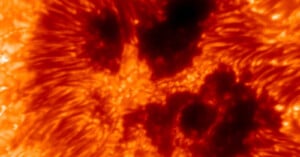
The Daniel K. Inouye Solar Telescope, the world's most powerful solar telescope, captured its first images last week using its new Visible Tunable Filter (VTF) instrument. The groundbreaking photo shows a cluster of sunspots, each roughly the same size or larger than the contiguous United States.
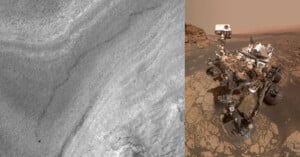
NASA's Mars Reconnaissance Orbiter (MRO) captured a unique image of the Curiosity rover mid-drive across the surface of Mars -- the first-ever time a satellite has captured the car-sized vehicle's movement.
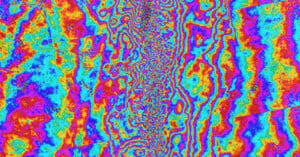
One month ago, a powerful and deadly magnitude 7.7 earthquake hit central Myanmar, devastating the southeast Asian country and killing at least 5,400 people. Scientists are investigating the geological impacts of the tragedy using satellites, discovering that the earthquake transformed the Earth itself in Myanmar.

While photographing wide-angle nightscapes is a common occurrence for astrophotographers, not many capture the faint nebulae and distant galaxies hidden beyond the Milky Way. Trevor Jones, creator of AstroBackyard, turned his obsession with space into a dedicated passion, teaching himself astrophotography to share the deep-sky he first witnessed through a telescope. Now a successful YouTuber and respected voice in the community, Jones helps demystify the process.

NASA's Lucy spacecraft captured close-up images of an asteroid formed about 150 million years ago.

NASA's space shuttle Discovery deployed the Hubble Space Telescope 380 miles (610 kilometers) above the Earth on April 24, 1990, 35 years ago today. To celebrate Hubble's birthday, NASA released four breathtaking new images.

The European Southern Observatory (ESO) has shared spectacular progress photos of the world's largest telescope which is being constructed on the Cerro Armazones mountain in Chile's Atacama Desert.

In the early morning hours of April 25 (Friday), a rare alignment of Venus, Saturn, and the crescent Moon will create a "smiley face" in the eastern sky. For photographers, it’s a brief chance to capture a celestial pareidolia.

A camera onboard the International Space Station (ISS) recently caught sight of curious markings stretching across the Tunisian desert — symbols so distinct that they resemble writing carved into the sand.

Don Pettit touched back down on Earth on Saturday -- the day of his 70th birthday -- after spending the last six months living in the International Space Station (ISS). Pettit is one of the most accomplished photographers to ever visit space and captured some special shots during Expedition 72.
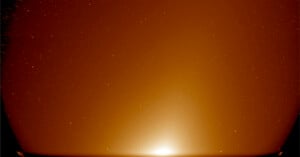
Polarimeter to Unify the Corona and Heliosphere, or PUNCH, is a spacecraft array that has sent its first photos back after its launch into polar orbit on March 11. The goal of the mission is to examine how solar corona transitions into solar wind, which is what is visible as auroras on Earth.